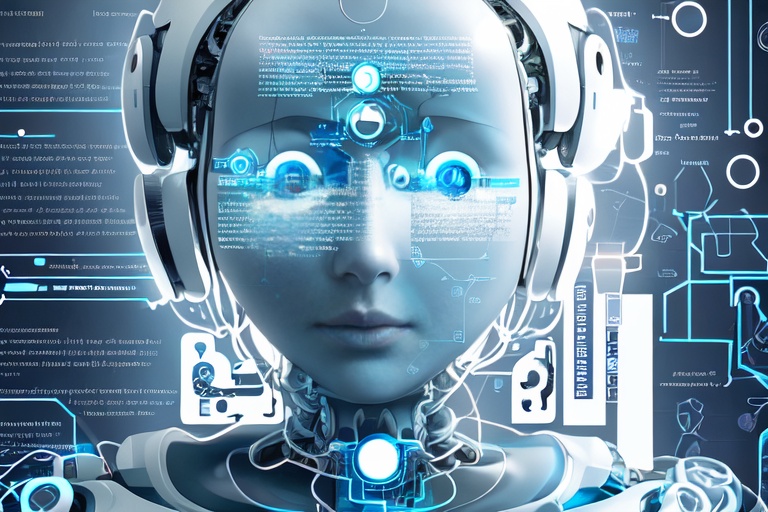Artificial intelligence (AI) is seamlessly woven into the fabric of our everyday life, quietly powering systems from the customer support chatbots that field our inquiries to the sophisticated algorithms that outplay humans in chess. AI is a dynamic and flourishing field, rich with possibilities for innovation and automation. At the heart of this technological marvel lies the ability of AI to emulate and occasionally surpass the decision-making capabilities typically associated with human intelligence. It achieves this by enabling machines to comprehend their environment, reason through problems, and learn from outcomes to make informed choices and forecasts.
Artificial intelligence (AI) is seamlessly woven into the fabric of our everyday life, quietly powering systems from the customer support chatbots that field our inquiries to the sophisticated algorithms that outplay humans in chess. AI is a dynamic and flourishing field, rich with possibilities for innovation and automation. At the heart of this technological marvel lies the ability of AI to emulate and occasionally surpass the decision-making capabilities typically associated with human intelligence. It achieves this by enabling machines to comprehend their environment, reason through problems, and learn from outcomes to make informed choices and forecasts.
As a subset of AI, machine learning (ML) sharpens the focus specifically on crafting systems that iterate and enhance their capabilities through experience. ML emphasizes the creation of models that learn from data to make predictions or carry out certain tasks, employing algorithms that discern patterns to make well-grounded decisions informed by the influx of data. While AI and ML are frequently mentioned in the same breath, it is key to acknowledge the differences—ML is just one of the many ways by which AI can be manifested.
Let's delve deeper into the expansive world of AI and its transformative effects across the spectrum of modern industries.
The Intricacies of AI and ML
AI encompasses a broad assortment of technologies and approaches, each with the goal of empowering systems to execute tasks that have traditionally been the domain of human cognition. This broad term includes capabilities from simple programmed responses to advanced learning systems. ML, meanwhile, provides the underpinnings for AI to evolve based on data accumulation and interactivity. It's about programming a computer to learn from inputs in order to optimize a task, rather than simply following a static set of instructions.
Data Science: The Backbone of AI
Companies seeking to glean the full benefits of AI often invest in robust data science teams. These professionals blend principles from statistics, computer science, and savvy business insights to mine and interpret heaps of data. By applying data analytics and ML models, businesses can improve their strategic initiatives and sharpen their competitive acumen.
The Crucial Role of Developers in AI
Developers stand at the threshing floor, separating the wheat from the chaff, as they integrate AI functionality to automate routine tasks, engage customers, detect recurring patterns, and troubleshoot convoluted challenges. Those aiming to venture into AI development need to bring to the table a strong mathematical foundation and a solid grasp of algorithms. A practical starting point would be straightforward projects which provide exposure to the nitty-gritty of AI development, allowing one to build confidence and expertise over time.
AI's Organizational Impact
Embracing AI technology has the potential to make seismic shifts within organizations. It offers more than just an emulation of human perception and actions—it brings a higher level of understanding and efficiency to data analysis and task automation. AI can aid enterprises in anticipating client behavior, alleviating the burden of monotonous duties, and bolstering overall productivity. Implemented strategically, AI can be a transformative force.
Leveraging Tools and Knowledge in AI
To harness these sophisticated tools in AI and ML, it's essential to tap into resources that offer support and insights into these technologies. Oracle, a forerunner in AI and cloud computing solutions, has a treasure trove of analyst reports, cloud infrastructures, and guides designed to empower businesses to adopt and proficiently use AI and cloud platforms. Drawing on Oracle's expansive knowledge base and digital solutions, businesses can move ahead of the curve, optimizing their operations for the better.
Staying Connected with Advances in AI, ML, and Data Science
For those intent on keeping a finger on the pulse of AI, subscribing to newsletters from leading tech companies like Oracle ensures a steady stream of updates, while attending industry conventions and seminars fosters a vibrant network of connections. As the trajectories of AI, ML, and data science continue to shape our future, it's paramount for businesses to integrate these technologies into the core of their strategic planning. Armed with the right tools, methodologies, and administrative tactics, businesses can unleash the full power of AI to spark forward-thinking, profitability, and consumer contentment.
Advancing technologies like AI, ML, and data science are not just trendy buzzwords—they're the engines of growth and transformation in the modern business landscape. Understanding and harnessing these tools is quintessential; not just for tech aficionados, but for anyone invested in the future of industry and innovation. As we continue to explore these realms, we can anticipate a future where AI not only supports but also inspires the way we think, work, and solve problems for years to come.
Information for this article was gathered from the following source.

